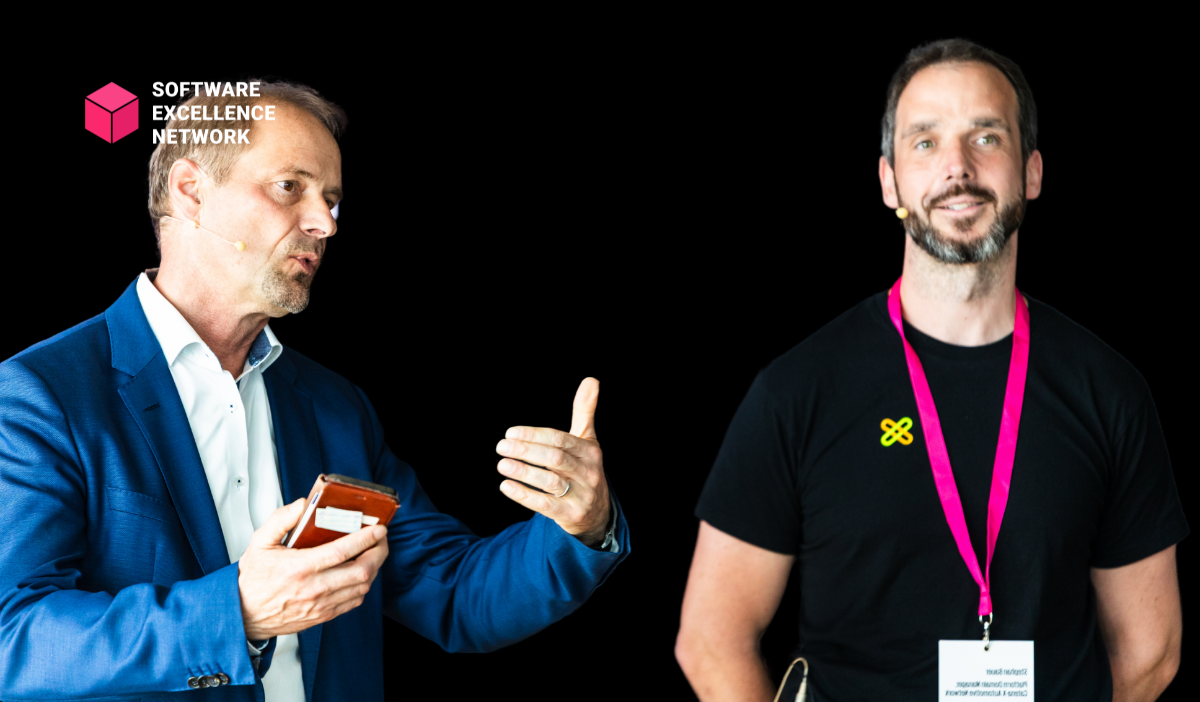
At the Software Excellence Network summit, Transform or Face Disruption, Dr. Jürgen Sturm (SVP at ZF Group) and Stephan Bauer (Platform Domain Manager at Catena-X) unveiled a new blueprint for CIO leadership—one grounded not in proprietary control or top-down deployment, but in radical collaboration, open-source software, and community-owned innovation.
As AI, sustainability, and digital sovereignty reshape global industries, CIOs are being called to rethink how software is built, governed, and scaled. The automotive sector’s Catena-X initiative—alongside its open-source backbone, Eclipse Tractus-X—is demonstrating what that new future looks like.
For decades, CIOs led their organizations through digital transformation using packaged enterprise software, customized integrations, and complex vendor ecosystems. But as Dr. Sturm reflected, this approach no longer meets the scale or complexity of today’s challenges.
Issues like real-time supply chain traceability, product carbon footprint calculation, and compliance with global ESG goals span entire value networks. No single company, platform, or cloud provider can solve them in isolation. They require a new paradigm: community-driven development, where solutions are designed and owned collectively by ecosystems of partners.
Catena-X is a pioneering realization of this vision. Instead of centralizing data or imposing uniform infrastructure, it enables secure, sovereign data exchange across companies through a decentralized architecture and a shared open-source technology stack.
Bauer, who serves as project lead for Eclipse Tractus-X, offered a rare inside look at how this model works in practice. Unlike traditional enterprise IT environments, Tractus-X operates on fully transparent and merit-based principles.
All planning, documentation, development, and release cycles happen openly on GitHub. Anyone—whether from a Tier 1 supplier, an OEM, or a consulting firm—can join, contribute, and shape the direction of the codebase. This openness isn’t just symbolic; it’s operational. Tractus-X spans 57 GitHub repositories, supports 23 products, and is maintained through four coordinated releases per year—all managed by a community of over 200 contributors.
Governance is earned, not bought. Developers begin as contributors, and through sustained, visible participation, they may be elected as committers—those entrusted with merging code into the project’s core. The most engaged and trusted among them may become project leads, as Bauer himself was. It’s a model that prioritizes trust, visibility, and responsibility over hierarchy or funding.
Tractus-X is not a boutique experiment. It is currently the largest Eclipse project by commits and contributors—testament to its industry relevance and traction.
Yet Bauer also made clear that success comes with challenges. Despite 43 registered committers, only 15 are currently active—highlighting the strain on community-maintained infrastructure and the need for more industry players to step up. For CIOs, this is both a caution and a call to action: if your enterprise benefits from open-source ecosystems, it must also contribute to their sustainability.
What makes this model particularly powerful is its portability. Tractus-X is now influencing similar initiatives across industries—from Manufacturing-X and Factory-X to Health-X and Semiconductor-X. Each builds on the same foundation: distributed data sovereignty, trusted interoperability, and shared development governance.
Perhaps the most important lesson is not technical, but cultural. For CIOs raised on project plans, control gates, and linear execution, stepping into an open-source, community-led model requires a profound mindset shift.
It means:
Bauer described this with practical clarity: GitHub is the project management tool. Meetings are open. Roadmaps are community-planned. Leadership is earned through demonstrated impact. The entire ecosystem is designed to be porous, participatory, and agile—not locked down.
Underneath this collaborative infrastructure lies an opportunity tailor-made for generative AI. As data becomes more standardized, connected, and machine-readable across companies, GenAI can move from isolated chatbots to ecosystem-scale intelligence.
This is the groundwork for generative agents that assist with sustainability reporting, compliance audits, supply chain risk prediction, and real-time quality diagnostics—tools that draw not just on one company’s data, but on shared industrial intelligence. With governance and transparency baked into the foundation, AI can operate within trusted boundaries that respect sovereignty, regulation, and competition.
As Dr. Sturm put it, one of the most transformative experiences of his long CIO career wasn’t a cloud migration or ERP rollout—it was participating in an open-source project as a first-class contributor.
That transformation, from solution buyer to ecosystem builder, from solo operator to community participant, is now available to every CIO.
The next frontier in enterprise innovation won’t be driven by closed platforms or internal sprints. It will be built together—in open codebases, cross-sector alliances, and shared technical standards.
The question is no longer whether to join. It’s when, where, and how.
Note: While I did try to represent Dr. Sturm and Mr. Bauer's presentation as well as I could, I still recommend watching the full presentation to understand both the depth and context of their insights. If you have questions or concerns, reach out to me.
These Stories on Events/Webinars
August-Bebel-Str. 26-53
14482 Potsdam, Germany
hello@seerene.com
+49 (0) 331 706 234 0
Generative AI Seerene GmbH
August-Bebel-Str. 26-53
14482 Potsdam, Germany
hello@seerene.com
+49 331 7062340